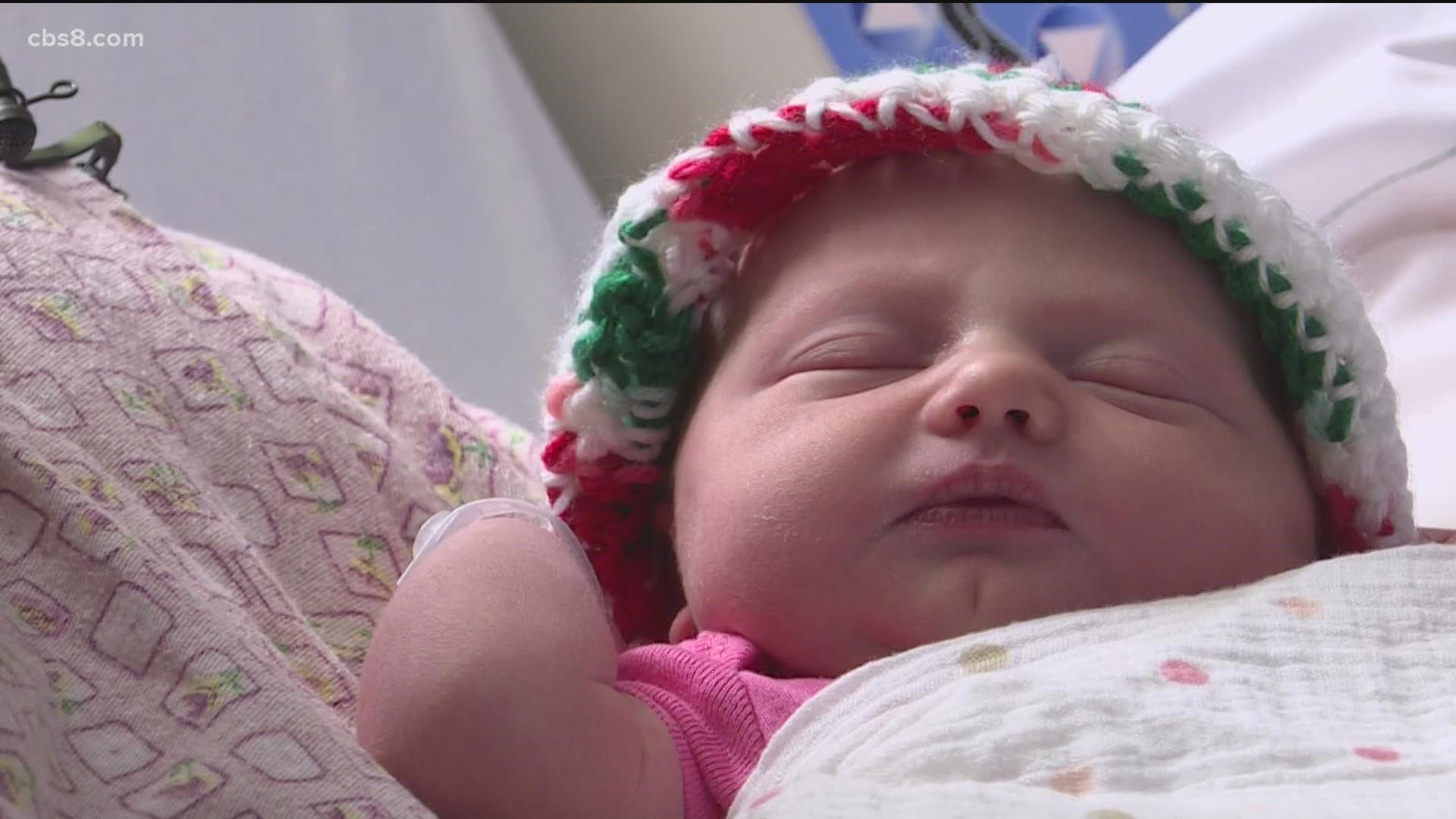SAN DIEGO COUNTY, Calif. — Republican-leaning counties saw a significant baby bump following the 2016 election of President Donald Trump compared to Democrat-leaning counties, a study from UC San Diego revealed Wednesday.
The study found that the difference in the first two years of the Trump presidency amounted to between 1% and 2% of the national birth rate.
That's a significant partisan shift according to the UCSD authors, Gordon Dahl, professor of economics in the Department of Economics/School of Social Sciences and William Mullins, assistant professor of finance at the Rady School of Management.
"The size of the change is equivalent to changes in birth rates that occur after economic shocks or in response to policies designed to affect birth rates," Dahl said. "For example, when unemployment drops by 1%, it increases national fertility by 1 to 2%, and when other countries provide a $1,000 subsidy to mothers for having a child, fertility rates rise by about 2%."
The study, to be published in a future issue of American Economic Review: Insights, is touted as the first to establish a link between a presidential election and the birth rates of politically aligned groups. The 2016 scenario provided the perfect natural experiment, the authors say, because the outcome was a surprise and also because the United States is so polarized.
Trump's win in 2016 was unexpected by the majority of Americans, the authors said, and it led to a sharp change in optimism among Democrats and Republicans, according to several different surveys. One survey revealed that within four months of the election, Republican and Democratic outlooks on the economy had flipped, with a strong majority of Republican voters saying they believed economic conditions were getting better -- reversing formerly pessimistic views -- while the opposite was true for Democrats.
In addition to comparing births between partisan counties, the researchers looked within counties at birth rates among Hispanics versus non- Hispanics, since, "Hispanics were singled out by the Trump campaign and voted approximately two-to-one for Hillary Clinton in 2016," they wrote.
The result was Hispanic mothers had fewer babies after the election -- a drop in birth rates among Hispanics relative to non-Hispanics equivalent to 2.3% of the national birth rate. The difference was even larger when compared to groups that heavily voted in favor of Trump, rural whites and evangelical whites.
As comparison, the researchers also looked at previous elections. The election of former President Barack Obama, who was long projected to win the presidency in both 2008 and in 2012, had no effect on birth rates. However, they found a similar effect in 2000, when George W. Bush was elected after Al Gore was favored to win. Still, the change was much smaller compared to the Trump presidency.
"Our research really illustrates how polarized the country has become over the last 20 years," Mullins said. "Democrats and Republicans are deeply divided on their policy priorities and worries about the future, including on topics such as the environment, inequality, moral values and immigration.
"Polling data on voters' satisfaction with `the way things are going in the U.S.' reveals members of the two parties see the country through almost completely different lenses," he said.
The researchers used birth certificate data from the National Center for Health Statistics. Since party affiliation is not listed on birth certificates, they compared the NCHS information to county-level Census Bureau data on the number of Democratic and Republican voters in the 2016 election. To gauge the effects on Hispanic mothers, they were able to use the ethnicity listed on birth certificates.
WATCH RELATED: Impact vaccines have on breastfeeding mothers and their babies (Jan 22, 2021)

